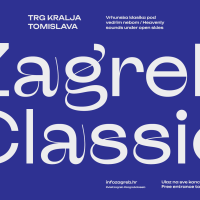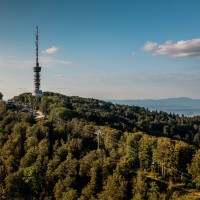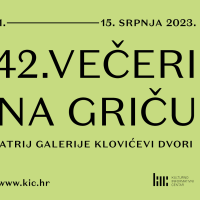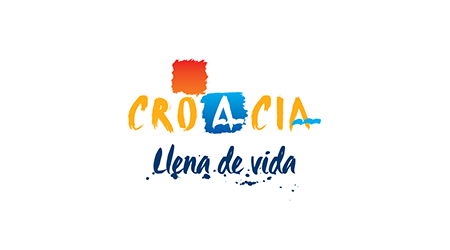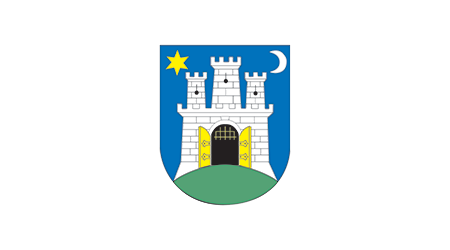The changing of the Cravat Regiment guard at St. Mark’s Square
Every weekend at noon, St. Mark’s Square in the Upper Town will be the venue for an attractive two-hour ceremony of the changing of the Cravat Regiment guard. Back in the 17th century, the regiment’s soldiers invented the tie, a modern-day masculine adornment popular across the globe.
 As of mid-April, every Saturday and Sunday exactly at noon, St. Mark’s Square in Zagreb’s Upper Town will be the venue for the exchange of the guard of the honorary company of the Cravat Regiment. This attractive tourist event was launched last August by the Zagreb Tourist Board in cooperation with the Academia Cravatica institution. The Cravat Regiment is part of the Croatian light cavalry from the 17th century; apart from great valour, its biggest claim to fame was its uniform, especially the distinctive scarves its soldiers wore around their necks, which is where the cravat got its name from. The knotted scarf quickly became a popular fashion accessory, and was already then known under the ethnic name of Croat people, whom the Germans called Krobatten, and the French referred to as Cravates.
As of mid-April, every Saturday and Sunday exactly at noon, St. Mark’s Square in Zagreb’s Upper Town will be the venue for the exchange of the guard of the honorary company of the Cravat Regiment. This attractive tourist event was launched last August by the Zagreb Tourist Board in cooperation with the Academia Cravatica institution. The Cravat Regiment is part of the Croatian light cavalry from the 17th century; apart from great valour, its biggest claim to fame was its uniform, especially the distinctive scarves its soldiers wore around their necks, which is where the cravat got its name from. The knotted scarf quickly became a popular fashion accessory, and was already then known under the ethnic name of Croat people, whom the Germans called Krobatten, and the French referred to as Cravates.
When the Croatian Royal Cravates regiment was established within the French Royal Army in 1664, the cravat officially obtained its seal of originality. Tourists will have an opportunity to hear this and many other interesting stories if they head to the Upper Town at the weekend, some twenty minutes before noon.
The changing of the guard will be preceded by a march of the squad of the honorary regiment from its headquarters at Dolac 2, past the Church of St. Mary, via Tkalčićeva street, over the Bloody Bridge and across Radićeva street, through the Stone Gate, and finally on to the Square of St. Mark, where the squad will fall into ceremonial formation.
Each changing of the guard will begin with an attractive ceremony: the preparing of the guard and a weapons inspection. A 12-soldier squad participates in the ceremony and, once the ceremony is completed, each of them is assigned to a particular post: St. Mark’s Square (the side entrance to St. Mark’s Church), the Square of Ban Josip Jelačić, and the statue of Her Lady at Kaptol. They are accompanied by armourers, trumpeters, drummers, flag-bearers and their commander, so the entire programme provides tourists with an insight into the forgotten tradition of soldiers from the glorious past. The official exchange of the guard begins precisely at noon, after Zagreb’s famous cannon at Lotrščak Tower sounds its bang, and it ends around 2 p.m.
Aside from weekends, the changing of the guard will also take place on special occasions and state holidays such as the Victory and Homeland Thanksgiving Day on August 5th, Independence Day on October 8th, and Cravat Day on October 18th.
Published: 01.04.2011
 Hrvatski
Hrvatski English
English Deutsch
Deutsch Spanish
Spanish French
French Italian
Italian Russian
Russian Korean
Korean Japanese
Japanese Chinese
Chinese As of mid-April, every Saturday and Sunday exactly at noon, St. Mark’s Square in Zagreb’s Upper Town will be the venue for the exchange of the guard of the honorary company of the Cravat Regiment. This attractive tourist event was launched last August by the Zagreb Tourist Board in cooperation with the Academia Cravatica institution. The Cravat Regiment is part of the Croatian light cavalry from the 17th century; apart from great valour, its biggest claim to fame was its uniform, especially the distinctive scarves its soldiers wore around their necks, which is where the cravat got its name from. The knotted scarf quickly became a popular fashion accessory, and was already then known under the ethnic name of Croat people, whom the Germans called Krobatten, and the French referred to as Cravates.
As of mid-April, every Saturday and Sunday exactly at noon, St. Mark’s Square in Zagreb’s Upper Town will be the venue for the exchange of the guard of the honorary company of the Cravat Regiment. This attractive tourist event was launched last August by the Zagreb Tourist Board in cooperation with the Academia Cravatica institution. The Cravat Regiment is part of the Croatian light cavalry from the 17th century; apart from great valour, its biggest claim to fame was its uniform, especially the distinctive scarves its soldiers wore around their necks, which is where the cravat got its name from. The knotted scarf quickly became a popular fashion accessory, and was already then known under the ethnic name of Croat people, whom the Germans called Krobatten, and the French referred to as Cravates.